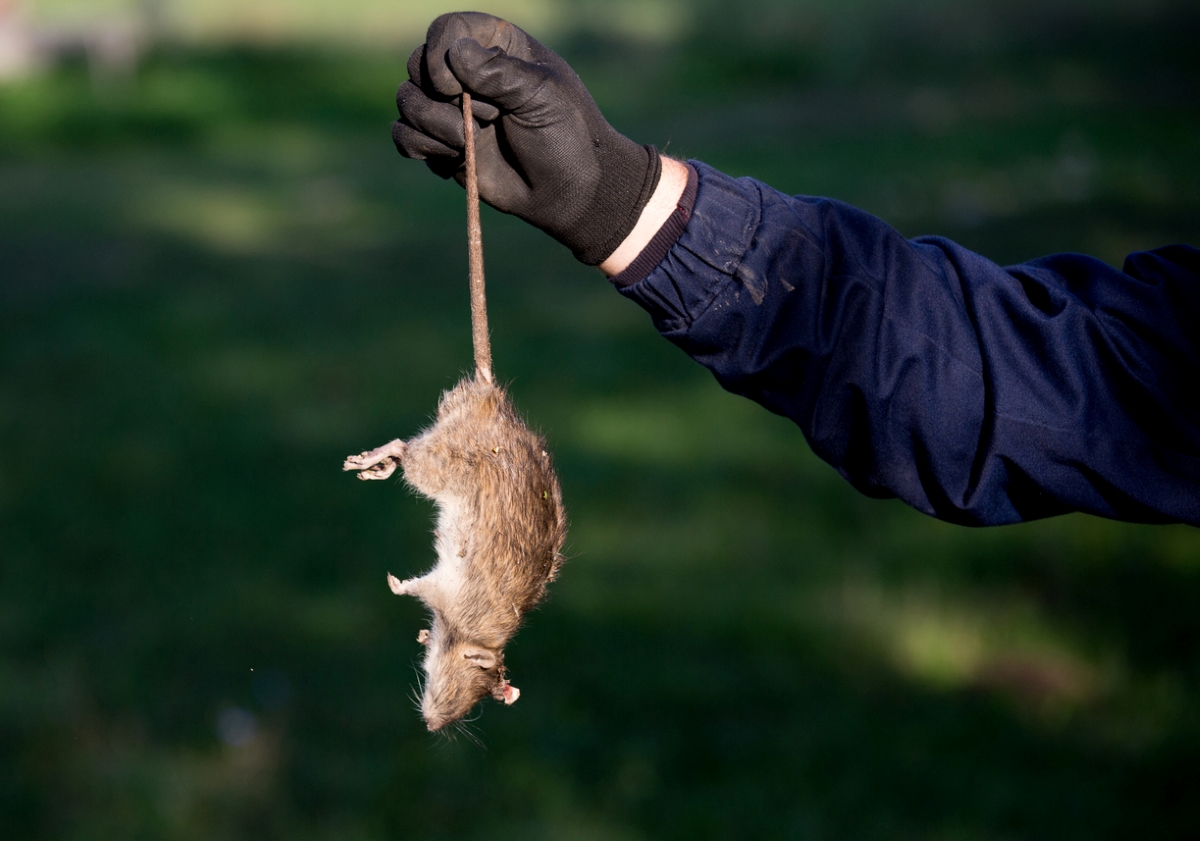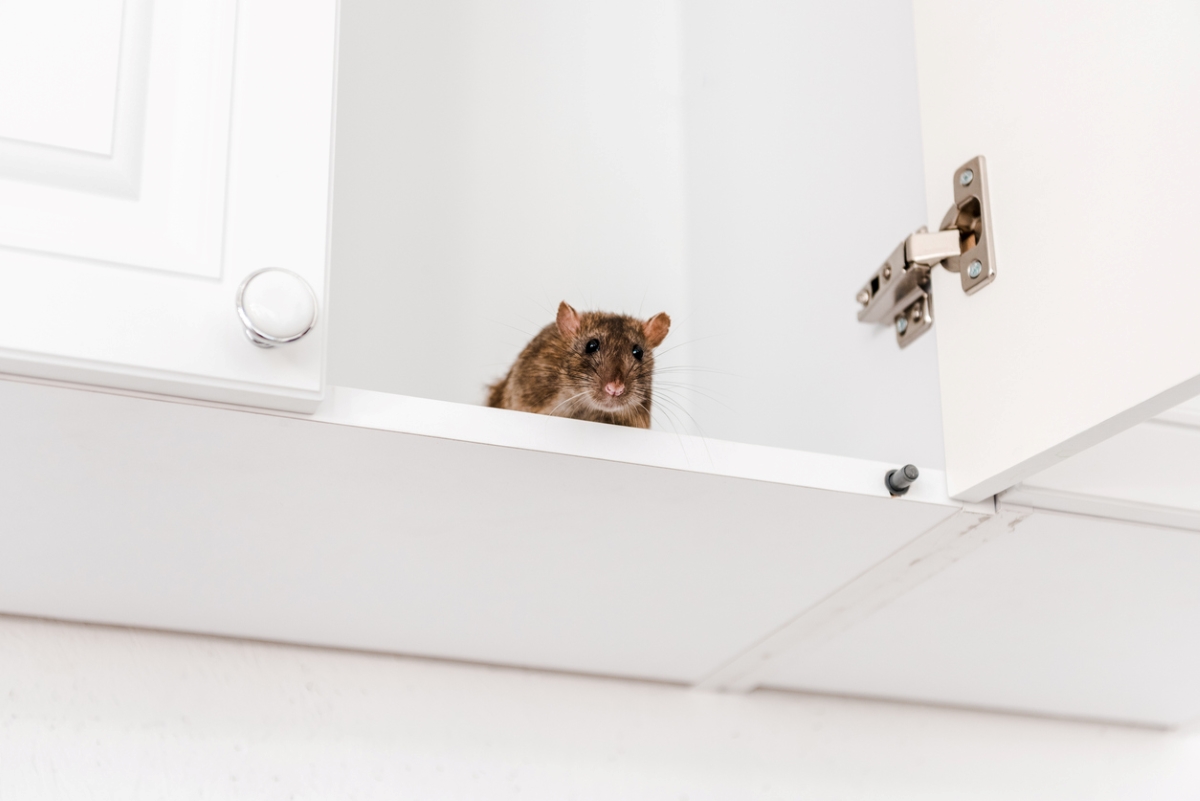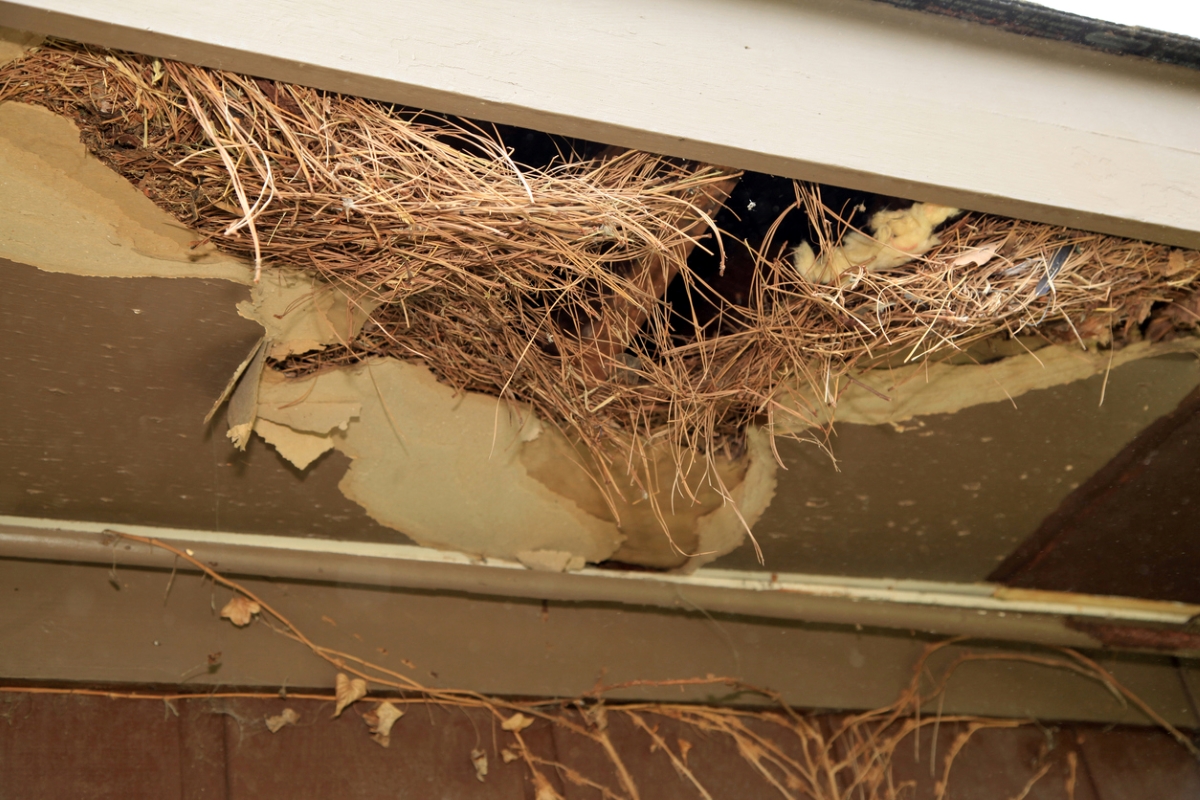

We may earn revenue from the products available on this page and participate in affiliate programs. Learn More ›
Mickey Mouse and Remy in Ratatouille might be adorable characters on the screen, but there is nothing entertaining about finding rodents in a home. They can be a nuisance and cause significant damage, plus an infestation of mice or rats can pose serious health risks to everyone in the home. According to the Centers for Disease Control and Prevention, rats and mice are known to carry many diseases that can spread to people directly by handling the rodents; having contact with their feces, urine, or saliva (such as through breathing in air or eating food contaminated with rodent waste); or getting bitten. Mice and rats also can carry ticks, mites, or fleas that can act as vectors to spread diseases to people.
Because of the risks that come with these creatures, it’s critical to get rid of them as soon as possible, such as by contacting an exterminator who can best assess the situation. It might be tricky to determine if an unwanted visitor is a rat vs. mouse, so consider the following tips to help identify the type of rodent to determine the best approach for addressing the situation.
Mice are smaller than rats.
The simplest way to distinguish whether a visiting rodent is a house mouse or rat is by zeroing in on its appearance. The most outwardly visible difference between mice and rats is their size, notes Meg Pearson, training manager at Critter Control. “Mice are noticeably smaller than rats, which are a lot larger, averaging at about a foot in length. Rats also often have a bulkier shape to them, compared to the slender, lightweight frame of mice.”
When including the tail, a mouse normally will measure 5 to 7 inches long. In comparison, a rat can grow to 7 to 9.5 inches long, including the tail. Because rats are larger than mice, their tracks or footprints also are much larger: ¾ inch to 1 inch compared to mice tracks, which are typically ⅜ inch or less.
RELATED: House Mouse vs. Deer Mouse: What’s the Difference?
Color, eyes, and tails also vary.

In addition to rat size vs. mouse size, overall color is a helpful clue. Mice tend to be light brown or a paler gray than rats, which are typically dark gray or even black. Also, a mouse is smooth looking while a rat appears more shaggy. A mouse will have large ears, a pointed nose, and small eyes compared to their head, says Tyler Hawkins, region field manager at Fox Pest Control. “The nose of the Norway rat is more blunt. Its eyes and ears are small when compared to the head. Its tail is shorter than its head and body combined.”
When it comes to mouse tail vs. rat tail identification, there is a clear difference. The tail of a mouse is longer than the head and body combined.
Mice reproduce at a higher rate than rats.
The number of critters might also indicate whether rats or mice are lurking in the house. A single female mouse can give birth to 300 or more pups in just 1 year, while rats frequently breed throughout the year and can produce up to 2,000 babies. However, mice gestate (remain in the womb) for less time. Baby mice typically are born just 20 days after mating and can reproduce themselves within their first 4 to 8 months. This rapid reproduction rate means more mice will occupy an area at a quick pace. These mice threaten to destroy stored food, electrical wiring, and even the health of the homeowners.
RELATED: Here’s What to Do About Mice in the Walls
Rats are considered more difficult to bait and trap compared to mice.

Mice are curious and determined to find food, which means they won’t hesitate to approach snap traps baited with food throughout the house. Rats, on the other hand, are more guarded and thoughtful about their every move. “Rats will identify the safest route to get across a room, usually staying close to the wall, and will stick to that travel path every time,” explains Pearson. “The moment something new is introduced to their environment, they will be immediately cautious of it, and reluctant to approach.”
Based on this characteristic, don’t expect rats to run right up to a trap like a mouse might, no matter how tasty the food inside. Pearson reminds homeowners that mice and rat traps are not interchangeable. “If you’re setting traps, be sure you’ve correctly identified which animal you’re dealing with and have purchased the appropriate, corresponding trap,” she says.
Mouse droppings are smaller and darker.
One of the easiest ways to identify the type of rodent is by inspecting their droppings. According to Hawkins, “Rat droppings are much larger than mouse droppings. Rat droppings can be anywhere from 0.5 inches to 0.75 inches in length and mouse droppings are normally .25 inches or less.” While mouse droppings might be easy to miss, a single mouse typically leaves behind 50 to 75 droppings each day outside its nest.
Further, identifying rat droppings vs. mouse droppings can boil down to the differences in how they look. Mouse droppings are black, cylindrical in shape, have pointed ends, and look like a piece of rice. Rat droppings are larger and shinier.
RELATED: If You See One Mouse, How Many Do You Have?
Mice and rats prefer different nesting sites.

Figuring out where the rodents are nesting can also help identify if they are rats or mice. According to Pearson, mice tend to build their nests close to food sources. Therefore, a scurrying creature in the kitchen, such as in the pantry or under a refrigerator or dishwasher, is most likely a mouse. On the other hand, most rats prefer nesting in lower levels of the house, such as a crawlspace or basement, though some nest in attics.
“Roof rats prefer higher elevations, like attics, where they are more likely to go unnoticed and remain safe,” says Pearson. “You’re more likely to spot a mouse scurrying about your home, as they are a more curious-minded animal than rats, who tend to be cautious of new, potentially dangerous environments,” she says.
Certain sounds indicate whether it’s a mouse or a rat.
Hearing scratching, scurrying, and gnawing could mean there is an unwelcome guest in the house. But listening for specific noises is a way to identify whether it’s a mouse or a rat. “If you hear that classic rodent squeaking sound, odds are you have a mouse problem,” notes Pearson. Since mice are smaller in size, they aren’t as heavy as rats and move a bit lighter on their feet, so their scurrying isn’t heard quite as easily. On the other hand, “Rats are most commonly heard through their scurrying or scratching in the attic due to their heavier weight.”
Rats have larger gnaw marks.
To create better access points for themselves, rats and mice gnaw on hard, inedible materials like wood, plastic, pipe, cables, and electrical wiring. Taking a close look at these gnaw marks can help determine which rodent is responsible for the damage. According to Hawkins, “Gnawing holes of mice will be around an inch or so in diameter, while the gnawing holes of rats could be as large as 2 inches.” Also, gnaw marks around the holes come in varying sizes or lengths. He says that the gnawing marks of rats can average 3.5 to 4 millimeters (1.4 to nearly 1.6 inches), while marks of mice will be around 1 to 2 millimeters (.04 to .07 inch).
